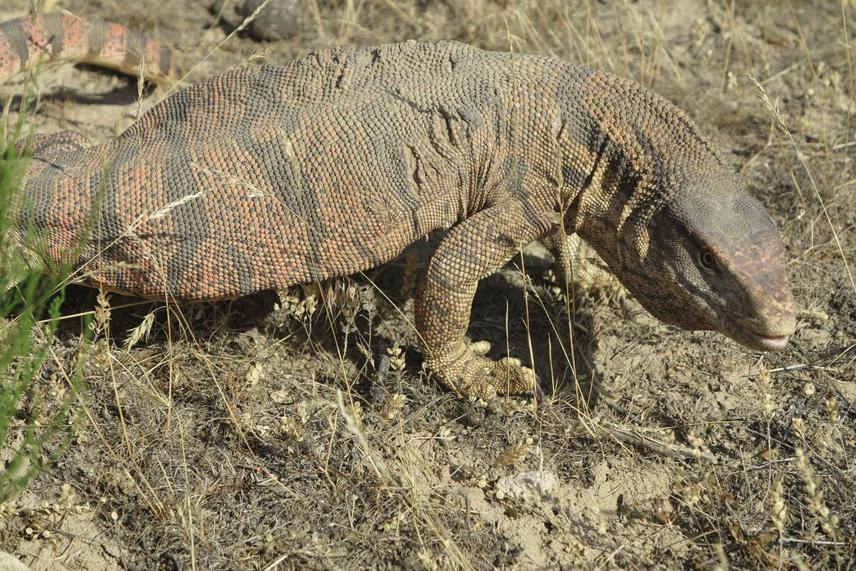Marina Chirikova
Other projects
29 Mar 2016
Development of Measures for the Conservation of the Desert Monitor in Kazakhstan and Uzbekistan
The aim of the research is to estimate recent distribution and number of the Desert Monitor populations in Kazakhstan and produce the conditions for its conservation.
The Desert Monitor is the only representative of the family Varanidae in the fauna of Kazakhstan and Central Asia. The species is introduced into the Red List of IUCN, Red Data Books of former Soviet Union countries and in Appendix I of the СIТЕS. In the Red Data Book of Kazakhstan it is entered as a species with reducing range and number (category II).

The main causes for decline of Desert Monitor populations are destruction and decrease of natural habitats because of strong anthropogenic pressure, lizard death on the roads, and direct extermination of the monitors because of negative attitude of local people to those animals. According to opinion of high-qualified herpetologists the Desert Monitor is most threatened reptilian species within the territory of Kazakhstan. Poor knowledge on recent distribution and population statement doesn’t give a possibility to organize an effective plan of species conservation. The purpose of the project is to estimate recent statement of the Desert Monitor populations in Kazakhstan and to create the conditions for its protection.
We are planning to organize a fieldwork research in two regions of Kazakhstan to study the recent distribution and number of the Desert Monitor. We will specificate the areas requiring special attention for lizard conservation (key territories) and will mark the main factors determined habitat destruction and number declining. Basing on data obtained we will process the recommendations for protection of the Desert Monitor that will be direct to regional and republican state government bodies.
During the project realization we plan to organize PR-company under the motto “Attention! Monitor lizard!” in the different mass media to tell the public about this reptilian, its ecology and positive role in the local ecosystems, to explain the problem of its conservation and reasons for the downsizing of the lizard. We suspect that such activity will start a gradual change in traditionally negative attitude of local people to the monitor. To raise local awareness we will distribute the posters and calendars with the original photos of monitor and to inform the general public with project results using lectures in the educational and nature protective institutions.
In the course of the realization of the project it will be adjusted the interaction between the specialists – herpetologists, official nature protective organizations and the general public. We believe it will be a basic condition for conservation of the Desert Monitor in Kazakhstan.